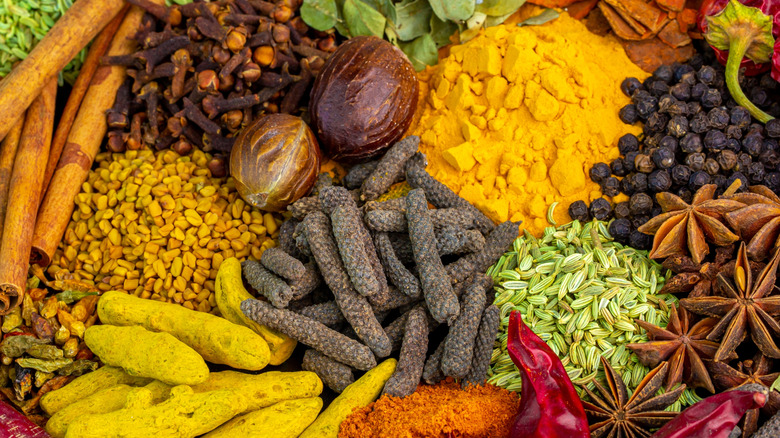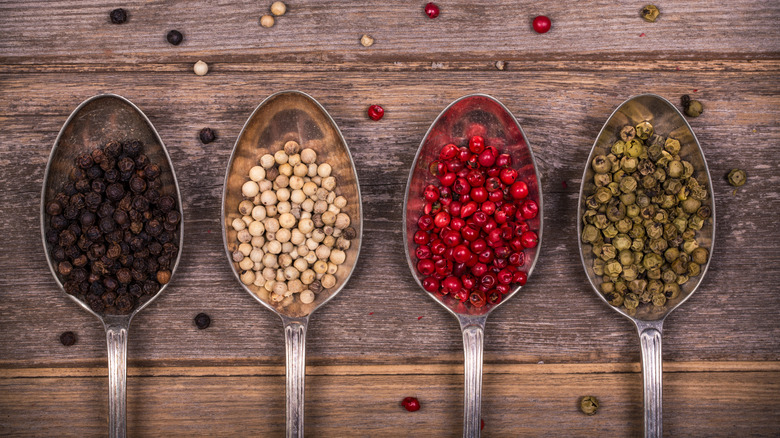Why Whole Spices Are Better Than Ground Spices
If your spice cabinet is filled with pre-ground jars of cinnamon, cumin, or cloves from lord-knows-when, you are not alone. Most of us begin our cooking journeys with ground spices because they're readily available, convenient, and seem to get the job done. But if you've ever wondered why your homemade curry doesn't taste quite like your favorite takeout, or why pho broth without fresh Saigon cinnamon bark is so dull, the answer may lie in the grind — or lack thereof. Essentially, whole spices are fresher, more flavorful, and more versatile than their ground counterparts. Here's why it's worth making the switch.
The biggest reason to use whole spices is freshness. The minute a spice is ground, it starts to lose its essential oils — those volatile organic compounds that give spices their signature flavor and aroma. Whole spices keep these precious oils locked inside their sturdy shells, preserving their intensity until you're ready to unleash them. That's why steeping whole saffron threads in warm milk makes your kitchen smell like a spice market in Istanbul, while pre-ground saffron could never.
Now, spices don't exactly go bad, they do begin to fade after six months. (Which means there is a time when you ought to throw out your old ground spices.) Ground spices have a shorter shelf life because more surface area is exposed to air, light, and moisture. Whole spices, on the other hand, can last for up to four years when stored properly.
How to start using whole spices
Making the leap doesn't require a kitchen overhaul, just a willingness to put some money down, because good whole spices ain't cheap. Start small by investing in a basic spice grinder or mortar and pestle. You might actually enjoy how pleasingly visceral it is to crush and pound your own spices. Start your whole spice journey with a few versatile spices like cumin, coriander, peppercorns, and cinnamon sticks. When you're ready to start cooking, toasting them in a dry skillet will further deepen their flavor before grinding.
Whole spices also give you more options with texture and flavor intensity. If you want a subtler hint of cardamom, you can always toss in a whole pod and remove it when it's reached the right level. If you need full-on flavor, grind it fresh right before using. You can toast, steep, crack, or crush whole spices depending on your dish, which gives you more flexibility and way deeper flavors.
Store whole spices in airtight containers away from heat, light, and moisture; think a cool, dark pantry — not above the stove. Glass jars with tight lids work best. When it comes to organizing your spices like an expert, label them with the purchase date to keep track of potency.
Ground spices have their place, but when flavor really matters, whole spices deliver. It's like a fresh pull of espresso versus gas station coffee — once you taste the difference, there's no going back.

